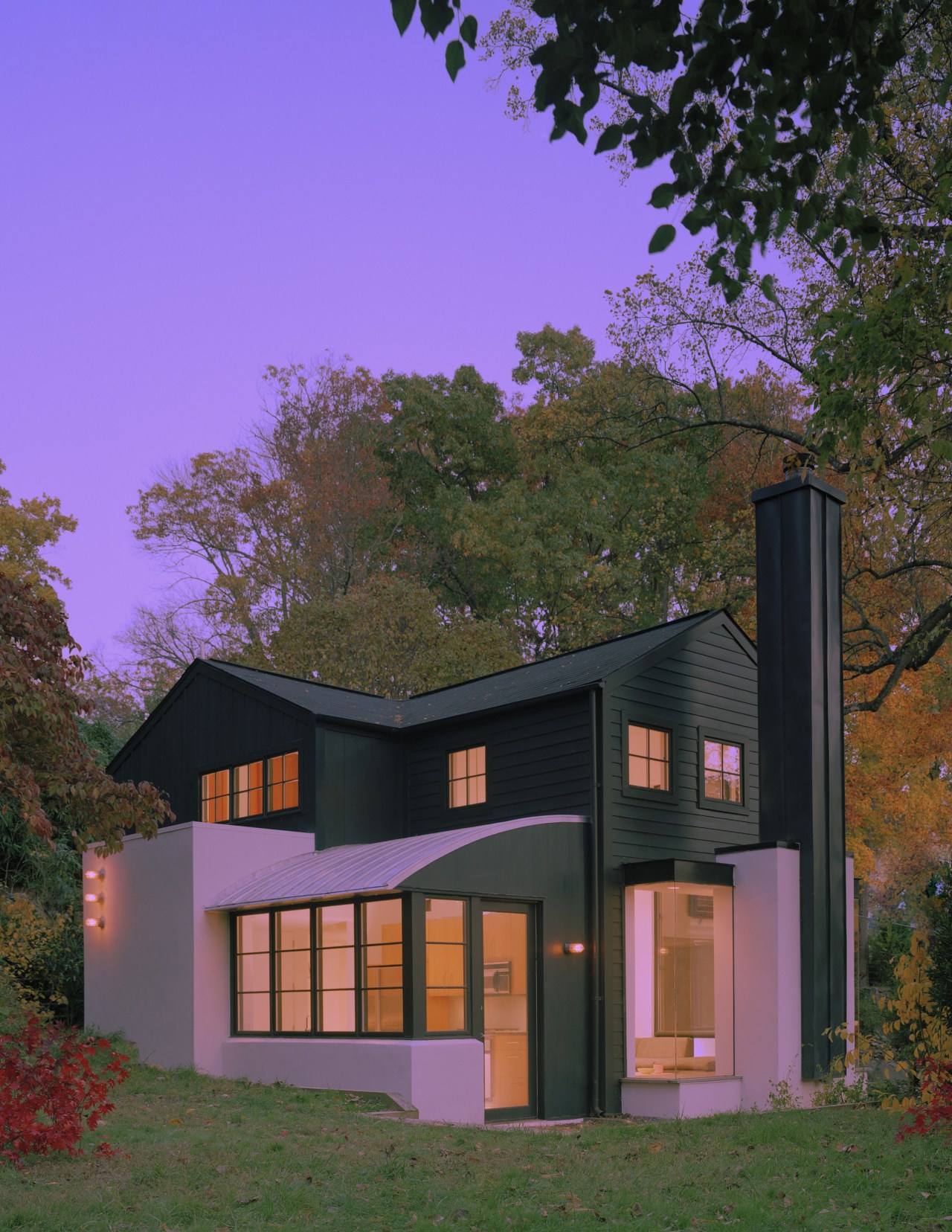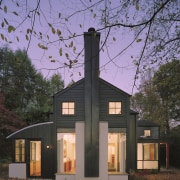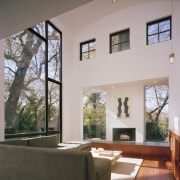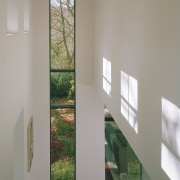Worth the wait
Transforming a 100-year-old house into a contemporary home required a shared vision and patient progress over ten years
If you watch home improvement programmes on television, you might think that renovating is a fairly straight-forward affair, with steady progress from concept to fruition. But the realities of time, budget and daily life mean that many renovation projects take months, if not years, to complete.
When architectural photographer Anice Hoachlander and her husband, Peter Hobby, bought this two-storey house on a wooded site, it was the beginning of a lengthy process. The original structure, which was built in 1906, is located in a neighbourhood of modest traditional homes. Additions were made to the house in the 1950s and in 1980.
"We knew that a great deal of work needed to be done," says Hoachlander. "Before we put an offer in, we called Bob and asked him to have a look."
Architect Robert M Gurney is a long-time client of Hoachlander, and he saw the potential to create a light-filled, open and contemporary home.
"The form of the original house is quite geometric," Gurney says. "Its simplicity allowed us to bring in contemporary elements and modifications, without the risk of awkward transitions between the old and the new."
"He completely understood what we wanted to achieve," says Hoachlander. "I remember the three of us looking at the house, and Bob saying Oh, that's no problem. We can do that.'"
The owners and architect planned the renovation with a ten-year timeline. A degree of flexibility was built in, so that different aspects of the work could begin as time and budget allowed. Homeowner Peter Hobby took a hands-on role in the project, completing a great deal of the work himself, while additional sub-contractors were brought in for specific jobs, as required.

Out of respect for the original structure and its relationship with the woodland setting, much of the original footprint and exterior walls remained intact.
Work on the perimeter of the house involved adding small volumes, such as the kitchen and entry foyer. Each change was a step toward the ultimate goal of reconfiguring the small, single-function rooms into a modern, open floor plan, and altering the ceiling heights without altering the existing envelope.
Hoachlander says the original ceilings were only two metres high. Combined with the small windows, they made the house feel very cramped.
"We felt like we had to duck our heads. The rooms seemed so low and confining."
Raising the living room ceiling to create a two-storey void and installing the double-height windows was the most difficult phase of the project. It took three months, and because it involved the very core of the structure, it was the only time the family needed to move out.
"The transformation was amazing," says Hoachlander. "Suddenly southern and western light poured in. We could see trees and the sky. It changed everything."
Though the shared vision was to create a strongly contemporary residence, it was important that the home become a part of its surroundings.
To that end, the exterior was clad in dark green-stained timber weatherboards, and traditional gables coexist with flat and arched roof shapes. Wide, unbroken expanses of glass, typical of contemporary architecture, feature on the ground floor, while smaller, paned windows are used in the bedrooms and other spaces on the upper level.
In a neighbourhood of older, traditional homes, the finished house has become an ambassador for contemporary design.
"I think there are a lot of people who love modern architecture," Hoachlander says. "We've hosted several local events, and the response has been fantastic. Everyone says how welcoming the house feels, and how relaxing the interior is. We're so pleased with the result I wouldn't change a thing. I look around, and I can't believe we actually live here."
Gurney says this project represents a successful, if unconventional, approach to a renovation project.
"We only added 50 metres to the area, but all the spaces in the house were gutted and refinished. The wiring and utilities were completely upgraded along the way. Although it took ten years, there was very little deviation from the original master plan. Perseverance and patience were the key. Ten years passed very quickly."
Story by: Kathleen Kinney
Home kitchen bathroom commercial design
Classic looks, contemporary efficiency
Personality plus
Diving into nature












